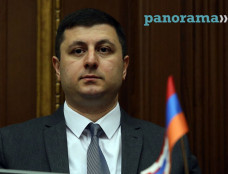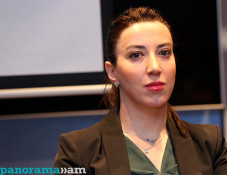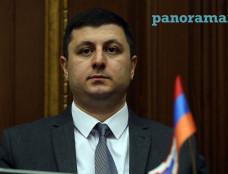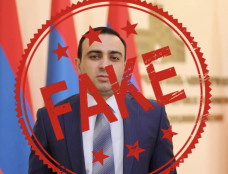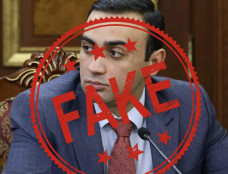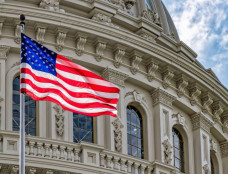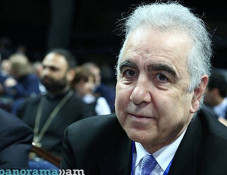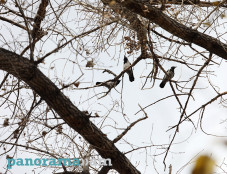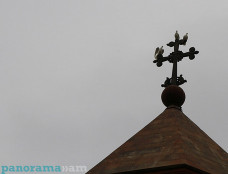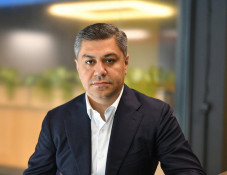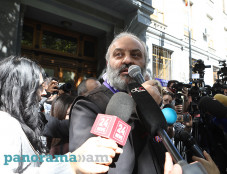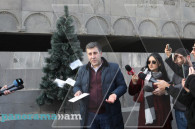
Armine Adibekyan: Azerbaijan does not look for justice in Aghdam events but indulgency for further atrocities against Armenians
Panorama.am held an interview with the head of the "Xenophobia Prevention Initiative" NGO, sociologist Armine Adibekyan.
- Each year at the end of February Azerbaijan with a widespread propaganda marks the Aghdam events that took place in 1992, which are called "Khojalu events". How would you comment on this campaign?
- I will not relate again and again what happened that time, I'd like to talk about what's going on today. The arguments of the Armenian side can be found in the film titled “Between hunger and fire”. And if somebody needs it is possible to organize objective and rational discussion with facts and not emotions, whims and wishes. But this is not possible as it never has been before. The active and uncontrollable replenishment of the emotional sphere is the the only and primary challenge facing the Azerbaijani side, and they do it as they can. The Armenian side has repeatedly called the for discussion.
- What is the grounded disposition of the Armenian side based on?
- We use only the Azerbaijani sources and the chronicle of those years. We compare them with each other, and not with the "Armenian version". Our arguments are based also on the contradictions of Azerbaijani propaganda. After all, the one who tells the truth does not need to lie, to change the story and the testimonies. The falsification of photographs is the tip of the iceberg. Everything that is connected with the concept of "Khojalu" is being falsified – starting with illustrations and lists ending with the testimony of witnesses. At present they have are on a new type of retrospective interpretation and presentation of facts. For example, Gyulali Binalu who had been "in captivity" in an interview tells about "the horrors" of captivity, where he was tortured by Robert Kocharyan. However, he or maybe the journalists have forgotten that in February 1992, he had given an interview and on the newsreel he did not leave the impression of a man who had been tortured. By the way, the next day, after the interview, this group of people was transferred to the Azerbaijani side. And Robert Kocharyan not only did not participate in the interrogations, but he was not present in the newsreel either. Another "witness" in the film "When the sun went out" gives evidence, but cannot exactly remember the name of her husband, calling him Elmar Akhmedov Naib oglu, who, according to the official list of the victims, at that time, February 26, 1992 was only 6 years old. The third one, Panah Magerramov, says that he had his ear cut off, while on the photograph accompanying the journalistic investigation, we see that both of his ears are on their placec. And the photograph clearly shows that these are his "native" ears, not prosthesis. What can be expected from ordinary mortals, if "competent" people, such as Ramiz Fataliyev (the chairman of the commission of on investigation of the Khojaly tragedy at Milli Mejlis of Azerbaijan), after 23 years, instead of talking about what they know and about the results of the investigation, build their evidence based on "confessions of Zori Balayan" or authoritatively' claim via facebook that "there were 710 dead (instead of 613 yet unproven), and more than a hundred of children"? I tried to contact Ramiz Fataliyev through Facebook in order to get clarifications on topic, but received no response. By the way, any attempt to get a response from "competent" people on specific question remain in dead silence on certain allegations or facts.
- We would like to address the issue of falsifications in the lists of those dead ...
- The falsified lists of the dead in Khojalu have been studied back in 2012 in details. It is important to note several vital points - there are three official lists differing from one another; none of them contains 613 names (available options are: 630 names, 601 names, 508 names); over 70% of the victims are men aged 18 to 60 years, some of them have no relation to Khojalu at all - they have been killed in another time and another place.
- And, nevertheless, the Azerbaijani side periodically threatens to appeal to the International Court of Justice on wording "Khojalu genocide."
- As I said earlier, with such an approach and a collection of "factual" materials they have nothing to go to court with, thus the talks about the international court – the talks in favor of the poor, as well as the threats are designed for the ignorant ones. Anyway, if they are going to court with the facts that they have in their hands then I will attend that court with pleasure.
As for the considering the events that took place as a genocide, which supposes "total or partial physical destruction of an ethnic group", here there are a lot of white spots too. Azerbaijan's population in 1992 was 7,324,100 people. They will have to try very hard to prove that the death of three, even six hundred people, as the report of the international organization “Human rights watch” reads, served a threat to existence of an ethnic group that consisted of seven million people. It is, I think, needless to say that basically members of other ethnic groups like Meskhetian Turks, who were settled in the epicenter of the battle deliberately, were killed.
They are not looking for justice, but a "victory", as they understand it, which over the time will give them a moral justification in the eyes of the outside world for the atrocities and massacres planned against the Armenians. Perhaps it is already giving, judging by the statements of the first party of Azerbaijan, which are rather plain: "We will avenge", "Armenia must cease to exist," "we’ll be back, we’ll destroy and we’ll build our own one". In particular, the main product of propaganda in 2015 "Khojaly: A trial over Armenia" testifies this fact. People, who want to reveal the truth and justice, would call the book "The trial of the guilty." But Armenia and the Armenians are already considered as a culprit without trial or investigation. They need not the true, but the indulgency.
Newsfeed
Videos






